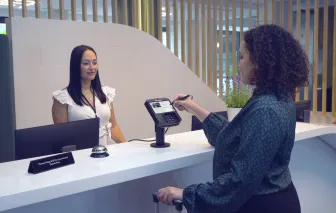Thanks to PPaaS, data gathered at the point of sale can provide merchants with invaluable information for optimising their business
In a world saturated with data, every person generates over 1.7MB of data per second, resulting in an unfathomable 2.5 quintillion bytes of data per day. However, what truly matters is the potential that data analysis provides. By utilizing AI algorithms, businesses can extract invaluable insights from massive amounts of complex information, improving decision-making and maximizing profits. While data protection regulations may limit the ability to analyze individual buying behaviours, aggregated data can still provide useful insights. Online transactions offer a convenient way to observe trends in real-time.
Zeal, for example, provides the merchants with world-class data, analytics and tools to predict consumer behaviour using AI to enable merchants to unlock the full potential of the customers in the most convenient user experience. As a result, they can make changes to optimise their payment funnel.
Mining the point of sale
But what about instore? Here, there’s potential to gain a wide range of insights from the data that’s stored by a point-of-sale terminal. Which is where PPaaS comes in.
PPaaS can easily consolidate the data from POS transactions – not just purchases but also refunds and returns. This information can be analysed by partner companies who form part of the PPaaS ecosystem, giving merchants insight and information that will help them to better manage their business. This is essentially general data that shows sales volumes; which products are selling well and which are least profitable; and the effectiveness (or otherwise) of promotions, both in single locations and across geographical areas.
The data can be compared across different time periods, and can also be analysed together with data from other sources. Cross-checking sales data with climate data, for example, can show how much the weather impacts not only total sales but also sales of specific products. For retailers with both an online and instore business, data can also be compared across all channels.
Merchants can monitor all this POS data on a dashboard in real time. This means they see up-to-the-minute information on sales – including sales across different stores, so they can optimise their inventory using predictive modelling.
Getting personal
In Europe it’s GDPR, in California it’s CCPA, in Brazil it’s LGPD… Wherever a merchant happens to be in the world these days, it’s likely there’ll be a bunch of letters representing some recently drafted data protection regulations that severely limit their use of personal data. That means they can’t link a purchase to a specific customer without first gaining their permission. But when those customers do agree for their data to be used, a whole new world of potential opens up for merchants, where they can identify individual purchasing patterns.
Online, asking for that permission can be a fairly seamless part of the payment process, with a tick-box. Instore, it’s not so easy. But things are changing.
The growth of virtual receipts is a significant factor. There are considerable sustainability benefits to phasing out paper receipts, which in many cases are non-recyclable and potentially harmful. Retailers are increasingly encouraging the use of virtual receipts, while the French government has gone one step further by banning paper receipts from the beginning of 2023.
The alternative to paper is a receipt delivered by email or SMS – and when customers are offered this option, they can be asked, via the POS device, if they are happy for their data to be used. They can also be asked if they want to join a loyalty scheme.
PPaaS allows acquirers to offer merchants tokenisation-as-a-service, which enables them to recognise loyalty scheme members at the point of sale when they make a payment. The aggregated data of loyalty scheme members can be mined to measure the results and effectiveness of specific scheme offers, and merchants can see rises and falls in sales and footfall around those offers. The same goes for more general marketing campaigns.
And of course the purchasing history of individual loyalty scheme members can be used to make personalised recommendations to them for other products and services, or to offer targeted coupons. Thanks to PPaaS, this can now be done at the point of sale, and can be as simple as making customers aware of the fact that there’s a coupon they can use – it’s like a personalised, instore version of the Coupert app, which helps shoppers find coupon codes when they’re shopping online.
Live, real-time data analysis at the point of sale can also help in the fight against fraud. A customer who’s on a blacklist can be immediately flagged up as they make a payment, for example.
The terminal bonus
Data can play a significant role in reducing potential issues on the POS. By cross-referencing the terminal's historical data and its own data including the total number of transactions completed, receipts printed and its age, preventative action can be taken before it breaks down. Artificial Intelligence algorithms can even be used to train the terminal to become self-aware and self-healing. These algorithms which are trained on historical data, mixed with external datasets to prevent terminals from becoming non-functional, thus reducing the cost burden for banks and acquirers while ensuring maximum uptime. With these data-driven solutions, the payment terminal can become a reliable asset for merchants and their partners.
When it comes to making the most of data instore with PPaaS, it seems that everyone’s a winner.
If you’d like to know more about PPaaS or would like to request a demo, contact us











